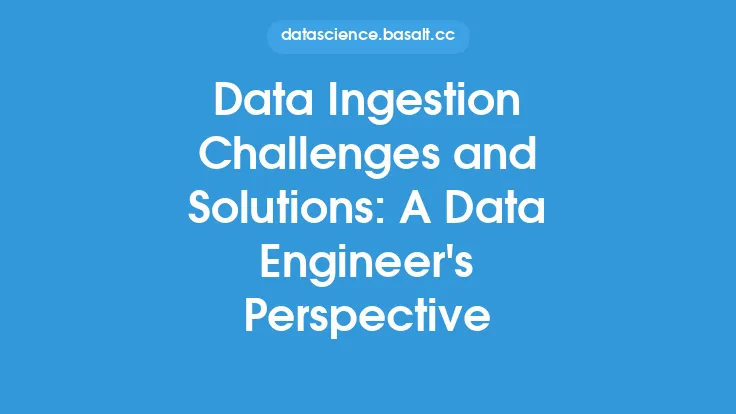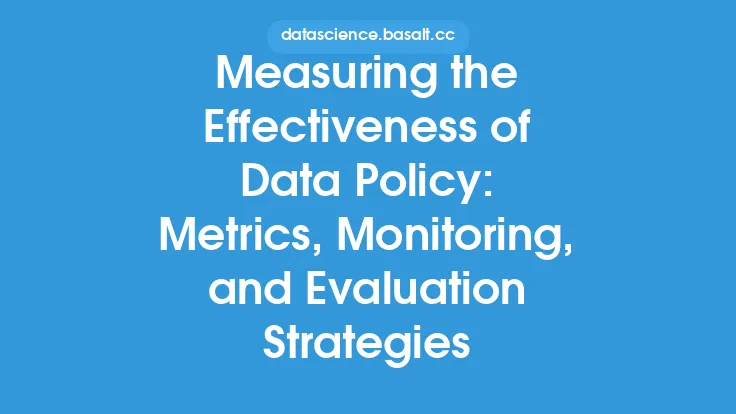Data wrangling, also known as data munging, is a critical step in the data analysis process that involves cleaning, transforming, and preparing raw data for analysis. It is a time-consuming and labor-intensive process that requires a combination of technical skills, attention to detail, and domain expertise. Despite its importance, data wrangling is often overlooked, and its challenges are not fully appreciated. In this article, we will delve into the common challenges faced by data wranglers and provide expert advice and strategies for overcoming them.
Introduction to Data Wrangling Challenges
Data wrangling challenges can be broadly categorized into three main areas: data quality, data complexity, and data scalability. Data quality issues arise from errors, inconsistencies, and missing values in the data, which can lead to biased or incorrect analysis results. Data complexity issues stem from the sheer volume, variety, and velocity of data, making it difficult to process and analyze. Data scalability issues occur when the data grows exponentially, making it challenging to store, process, and analyze.
Handling Missing Data
One of the most common data quality issues is missing data. Missing data can occur due to various reasons such as non-response, data entry errors, or equipment failures. There are several strategies for handling missing data, including listwise deletion, pairwise deletion, mean imputation, and regression imputation. Listwise deletion involves deleting the entire row or observation if any of the values are missing. Pairwise deletion involves deleting only the specific variable or column that contains the missing value. Mean imputation involves replacing the missing value with the mean of the observed values. Regression imputation involves using a regression model to predict the missing value based on other variables.
Data Transformation and Feature Engineering
Data transformation and feature engineering are critical steps in the data wrangling process. Data transformation involves converting the data from one format to another, such as aggregating data from a transactional level to a summary level. Feature engineering involves creating new variables or features from existing ones to improve the accuracy of the analysis. There are several data transformation techniques, including aggregation, grouping, and pivoting. Aggregation involves combining multiple values into a single value, such as calculating the mean or sum. Grouping involves categorizing data into groups based on one or more variables. Pivoting involves rotating the data from a row-based format to a column-based format.
Dealing with Noisy and Outlier Data
Noisy and outlier data can significantly impact the accuracy of the analysis. Noisy data refers to data that contains random errors or variations, while outlier data refers to data that is significantly different from the rest of the data. There are several strategies for dealing with noisy and outlier data, including data smoothing, data filtering, and data trimming. Data smoothing involves using techniques such as moving averages or exponential smoothing to reduce the impact of random errors. Data filtering involves using techniques such as regression analysis or decision trees to identify and remove outlier data. Data trimming involves removing a portion of the data from the extremes to reduce the impact of outlier data.
Data Integration and Data Merging
Data integration and data merging are critical steps in the data wrangling process, especially when dealing with multiple data sources. Data integration involves combining data from multiple sources into a single dataset, while data merging involves combining data from multiple datasets into a single dataset. There are several data integration techniques, including data concatenation, data merging, and data joining. Data concatenation involves combining data from multiple sources into a single dataset by stacking them on top of each other. Data merging involves combining data from multiple datasets into a single dataset by matching them based on a common variable. Data joining involves combining data from multiple datasets into a single dataset by matching them based on multiple variables.
Data Quality Control and Data Validation
Data quality control and data validation are critical steps in the data wrangling process. Data quality control involves checking the data for errors, inconsistencies, and missing values, while data validation involves checking the data against a set of predefined rules or constraints. There are several data quality control techniques, including data profiling, data auditing, and data certification. Data profiling involves analyzing the data to identify patterns, trends, and correlations. Data auditing involves checking the data for errors, inconsistencies, and missing values. Data certification involves verifying the data against a set of predefined rules or constraints.
Best Practices for Data Wrangling
There are several best practices for data wrangling, including documenting the data wrangling process, using data wrangling tools and technologies, and testing and validating the data. Documenting the data wrangling process involves keeping a record of all the steps involved in the data wrangling process, including data cleaning, data transformation, and data feature engineering. Using data wrangling tools and technologies involves using specialized software and programming languages, such as Python, R, or SQL, to automate the data wrangling process. Testing and validating the data involves checking the data for errors, inconsistencies, and missing values, and verifying it against a set of predefined rules or constraints.
Future of Data Wrangling
The future of data wrangling is exciting and rapidly evolving. With the increasing volume, variety, and velocity of data, data wrangling is becoming more critical than ever. There are several trends and technologies that are shaping the future of data wrangling, including big data, cloud computing, and artificial intelligence. Big data refers to the large amounts of structured and unstructured data that are being generated every day. Cloud computing involves using remote servers and data centers to store, process, and analyze data. Artificial intelligence involves using machine learning algorithms and natural language processing to automate the data wrangling process.
Conclusion
Data wrangling is a critical step in the data analysis process that involves cleaning, transforming, and preparing raw data for analysis. It is a time-consuming and labor-intensive process that requires a combination of technical skills, attention to detail, and domain expertise. By understanding the common challenges faced by data wranglers and using expert advice and strategies, organizations can improve the accuracy and efficiency of their data analysis and gain valuable insights from their data. Whether you are a data analyst, data scientist, or business leader, data wrangling is an essential skill that can help you unlock the full potential of your data and drive business success.





